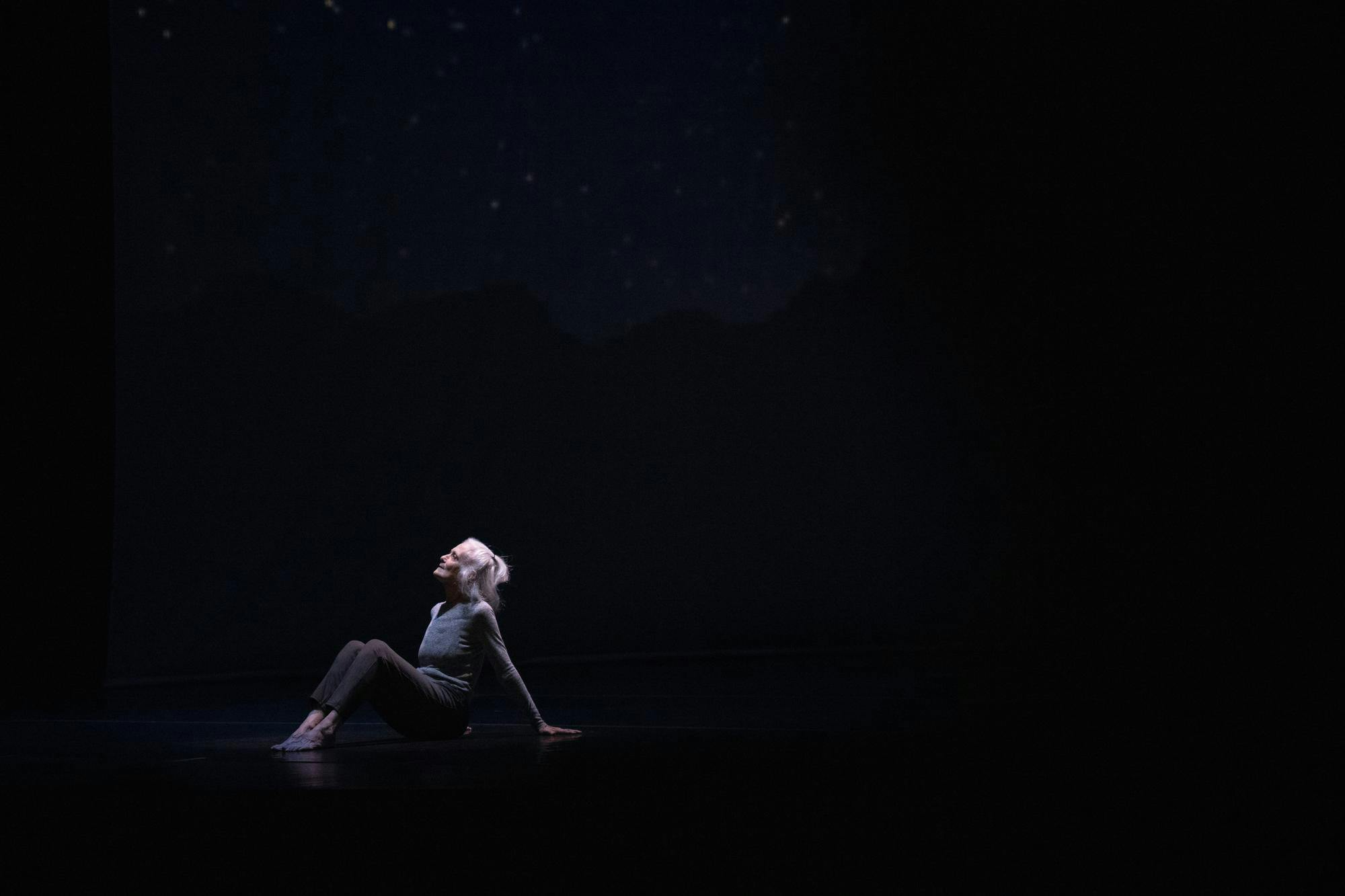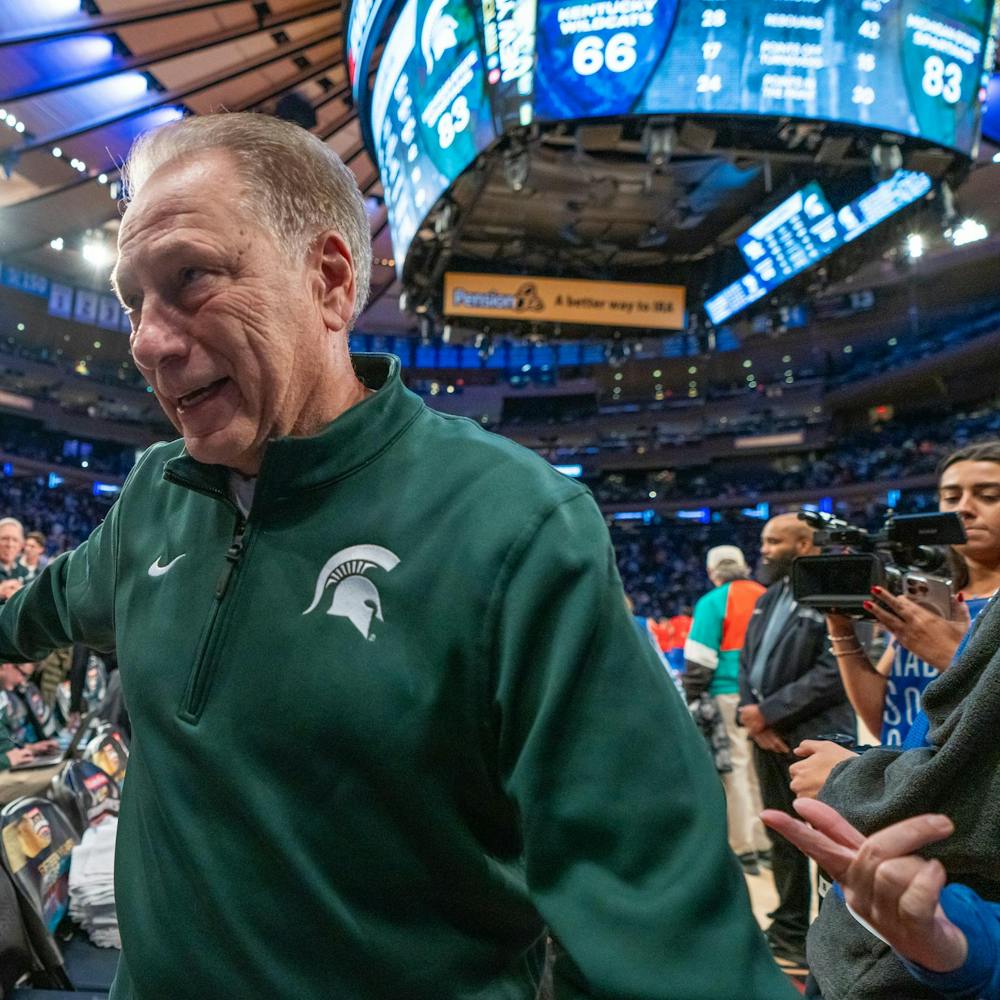Combining science and art, "Of Equal Place: Isotopes in Motion" was hosted in Cobb Great Hall at the Wharton Center for Performing Arts. The performance took place on Nov. 14 at 7:30 p.m. Students and other audience members were welcomed to enjoy a performance that meant so much more.
The experience was a product of collaboration between Michigan State University’s Facility for Rare Isotope Beams and Dance Exchange. The two have been in collaboration working on creating this experience since 2016 and this will be the second performance. The first was in Wharton’s Pasant Theatre in 2022.
FRIB faculty outreach advisor Artemis Spyrou was excited for this experience to make its return to Wharton for more than just artful dance, but also the community involvement it facilitates.
"We also have six people from FRIB, scientists from FRIB who are participating in the performance," Spyrou said.
Six scientists participated in the show as dancers alongside six Dance Exchange members and 12 dancers from communities local to MSU. Molecular biology doctorate student Jenny Schuster got to see one of her friends be included in the performance.
"One of my friends, and lab mates, was performing so I wanted to come out and see her do her thing," Schuster said. "It was really satisfying. I hear her talk about it all the time."
Earlier in the day, students had the opportunity to be shown around FRIB and participate in workshops as a part of the experience. Dance Exchange creative director Keith A. Thompson finds this to be a valuable part of the show.
"Science in motion is the workshop that the Dance Exchange hosts itself. And then we have science in your seats which Artemis facilitates with some of our dancers as well," Thompson said. "And then science in your hands… they get to actually touch things and put things and do things, scientific experiments in their hands."
Having both the opportunity to watch the performance and attend workshops and tour the FRIB make the performance into something greater.
"It’s really about humanity," Thompson said. "How we all connect to something and that we’re all made of the same things."
Dance Exchange director of creative engagement Ami Dowden-Fant sees the show similarly to Thompson. You can take away much more from than artful dance or scientific study.
"Whether you take a science component from it, a humane component from it, a student like 'this is the first time that I actually understood what an isotope is,' but just realizing you don’t have to place it (the show) in a box," Dowden-Fant said. "Not a lot of individuals and communities can see the infinite size of science and dance or them together."
Schuster had come to see one of her friends. She left having noticed the uniqueness of the show and seeing connections from the dancers to what she sees in the lab.
"It was very fun to see all ages of people out on the stage and doing these really unique movements," Schuster said. "I thought it was really impressive."
As it allowed students to draw comparisons and make conclusions, the show provided engagement and opportunity for students. This results in "Isotopes in Motion" being something more distinct than a show.
"They are experiences that are interactive and it’s really about engaging people, not just from a visual standpoint," Dowden-Fant said. "It’s also verbal like getting what they’re thinking about, what they saw and also a physical standpoint is truly valuable."
As an experience and an opportunity, Isotopes in Motion showed diversity in all formats. From the content and interpretations to those participating in the performance. The scientists and community dancers add to that as well as the Dance Exchange in their mission to promote diversity.
"Even the diversity in the dancers you see on stage, you have people from age 16 to close to 80, all races, all genders. It’s quite impressive," Spyrou said. "(Dance Exchange) wanted to bring this kind of theme to the science, communicating the science."
Support student media!
Please consider donating to The State News and help fund the future of journalism.
Discussion
Share and discuss “'Isotopes in Motion' brings unique experiences to Wharton” on social media.






